
The Free Press

Just over a week ago, Marco Troper, the 19-year-old son of former YouTube CEO Susan Wojcicki, died in his Berkeley dorm room after taking a drug.
“We don’t know what was in it,” his grandmother Esther Wojcicki told local media. “Teenagers and college students need to know that drugs today are not the same as the drugs of yesterday. They’re often laced with fentanyl.”
His family are waiting on the results of a toxicology report, which could take up to a month. But if it’s true that Marco lost his life to fentanyl, one thing is clear: he did not die of an overdose.
He was poisoned.
Every week in America, about 22 kids die of a drug overdose. Eighty percent of those deaths are linked to fentanyl—a cheap synthetic opioid fifty times more potent than heroin. Even with illicit drug use among middle and high school students on the decline, fatal teen overdoses have never been higher.

As some regular Free Press readers may know, I run a high school debate nonprofit called Incubate Debate. In early 2023, frustrated by how few students we worked with knew about fentanyl, my colleague and I began hosting free in-school assemblies with the singular goal of educating youths about this deadly substance. As part of this work, I have met 18 families across the country who have lost children to fentanyl. The parents of these victims include lawyers, day laborers, business owners, and cashiers. No race, class, or ethnicity has been spared. But like the family of Marco Troper, they all share one thing in common: they did not appreciate the danger of fentanyl until it took a child from their lives.
Fentanyl is so deadly it often kills kids experimenting with drugs for the first time. Between July 2019 and December 2021, according to the CDC, 86 percent of adolescents who died of a fentanyl overdose had never previously experienced a drug overdose.
In August 2020, 13-year-old Luca Manuel became one of them.
Known in his neighborhood of Shasta County, northern California, as kind and generous, Luca started his first toy drive at the age of five and fed the homeless on the weekends with his mom, Amanda Faith, 45.
In August 2020, Luca went on Snapchat and bought what he thought was a Percocet to numb the pain from a recent root canal. The dealer, who had previously sold Luca marijuana, used the social media platform’s mapping feature to deliver the pill to the boy at his home.
Hours later, Luca died in his bedroom from a fentanyl overdose.
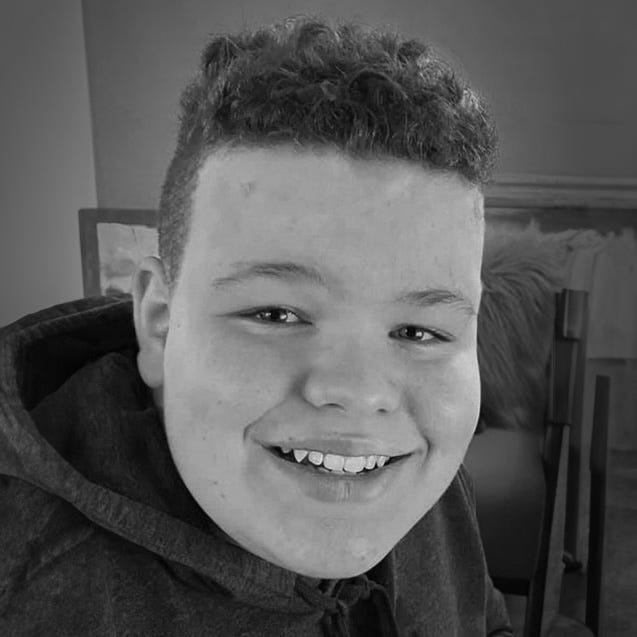
Luca’s dealer, who operated under the handle P_man2730, turned out to be 19-year-old Ryan Harrison. In 2021, he was arrested with over 900 pills in his possession, all of which tested positive for fentanyl. Two years later, he was sentenced to seven years in prison for voluntary manslaughter and the possession and sale of the drug.
“It was no Percocet. It wasn’t even mixed with Percocet,” Amanda says of the pill that killed Luca. “He only had fentanyl in his system.”
Amanda, who has one older son, told me she remains shocked over the loss of Luca. “The last time I held my son was in a body bag.”
Tasha Edwards knows Amanda’s pain.
Her daughter Breanna, 18, had just graduated from her high school near Atlanta, Georgia, when she went to a Memorial Day weekend party with a new group of friends. When Tasha hadn’t heard from her daughter for more than 12 hours, she asked her eldest daughter to scour Breanna’s social media to see if she could find any information.
That’s when they came across an Instagram post from Breanna’s friend.
It showed a photo of Breanna next to the caption, “OMG I lost my best friend last night.”
Later, Tasha found out that Breanna had been offered a pill at the party and told it was Percocet, which she split with her friend. By cutting the pill in half and sharing it, the teens had unwittingly taken a deadly gamble: the friend survived, but Breanna was dead within hours. Fentanyl is made so sloppily by Mexican cartels that one part of a single pill can contain a high dose of the fatal drug, while the other carries no risk.
“A lot of people feel like when this happens it’s happening to bad kids or troubled kids or kids who are addicts,” Tasha told me. “My daughter had never popped pills. I didn’t know about fentanyl until I read it on my daughter’s death certificate.”

Mexican drug gangs are primarily responsible for spreading this poison. The Sinaloa and Jalisco New Generation cartels import fentanyl’s precursor chemicals from China (in Wuhan, of all places) to Mexico, where they manufacture the drug, pressing it into counterfeit prescription pills. These pills are then moved across the border, both via legal checkpoints and illegal border crossings, to dealers in the U.S., who often use the social media app Snapchat—where messages are anonymous and disappear within an instant—to peddle the drug.
In 2023, the DEA seized more than 77 million fentanyl pills, the most in a single year.
“It costs the cartels as little as 10 cents to produce a fentanyl-laced fake prescription pill that is sold in the United States for as much as $10 to $30 per pill,” Drug Enforcement Administration administrator Anne Milgram told Congress in July 2023. “The cartels make billions of dollars from trafficking fentanyl into the United States.”
You might ask why cartels would make a drug that so easily kills off its customer base. The simple reason is greed. Even if one percent of their buyers die, the profits they’re making are worth it. It’s just collateral damage for the cartels—and they continue with business as usual.
At just 15, Noah Rodriguez lost his life to fentanyl. Raised in a Christian home in Kyle, Texas, he had struggled with substances in the past, but he was no addict. He was an honor roll student who wanted to join the U.S. Navy.
One evening in August 2022, Noah was hanging out with his girlfriend just a short drive away from his home. Shortly before midnight, his mother Janel Rodriguez heard her phone vibrating and pressed it to her ear.
On the other end was a person screaming.
“It was one of those screams you hear in a horror film,” she said.
A friend told Janel that Noah had overdosed on a drug.
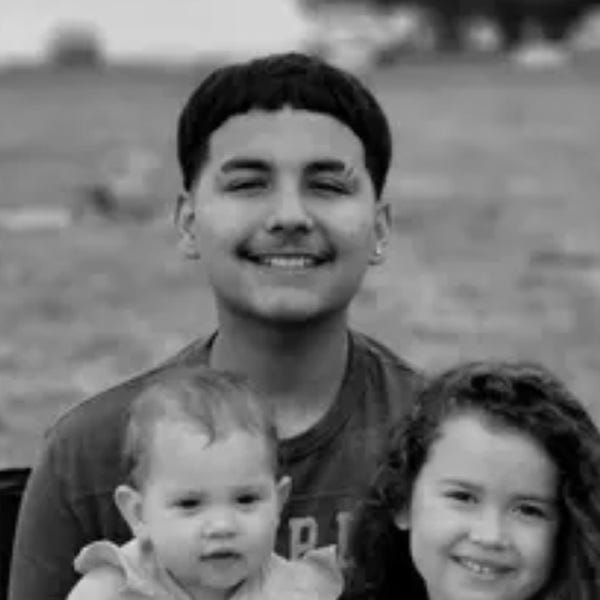
Immediately, Janel and her husband Brandon scrambled into their car and raced over to Noah’s girlfriend’s home, but when they got there, they saw his grandmother had already arrived.
“She stood with her head shaking,” Janel said.
A lethal amount of fentanyl is two milligrams. Janel later found out that the counterfeit Percocet that killed Noah contained eight milligrams of fentanyl.
“People come to me all the time to say they have lost a sibling, parent, relative to this poison,” Janel told me. “Fentanyl knows no barriers. It can affect anyone.”
It can even kill kids who take drugs to help them excel at school.
Tiffany Iler, 21, was a pre-med junior at Ohio State, majoring in neuroscience, who had attention deficit hyperactivity disorder (ADHD). Often, young people will take Adderall to help treat ADHD or help them focus on their studies.
In May 2022, Tiffany’s father Rich Iler had planned to pick her up at school after finals week. But before he got there, she died at her apartment, along with her friend Jessica Lopez, a computer and information science major. A pill that looked identical to Adderall was found on their desks, but a coroner’s report showed both young women had died of fentanyl poisoning—and had no other drugs in their system.
Rich Iler later told local news outlets that his daughter had wanted to be a doctor and help other people with ADHD.
“I didn’t know there was a fentanyl problem,” Rich told 10 WBNS. “I didn’t know it existed, frankly. I can’t get angry at her because she had no interest in losing in her life.”

The CDC has taken a bizarre approach to the fentanyl crisis. Although the agency’s official fact sheet warns of the deadly risks of the substance, it also suggests the public need only use test strips to ensure the drugs they take are safe.
But this advice is dangerous. Though test strips tout a 96 percent accuracy rate, that’s true only if the tested sample reflects the entire contents of a pill. As we saw in the tragic case of Breanna Scott, two halves of the same pill led to two radically different fates.
The CDC also recommends the nasal spray Narcan as a lifesaving cure for fentanyl overdose victims. Narcan can, has, and will continue to save lives, but it’s no panacea. For one, stocking it inside American schools—a gargantuan and costly task—will do nothing to help the 82 percent of teens who overdose at their or someone else’s home. What’s more, thirty percent of fatal adolescent overdoses happen when the victim is alone. Narcan is useless if no one is around to administer it.
As part of the organization I launched last year, Not Even Once, I’ve spoken to over 15,000 middle and high school students to educate them on the dangers of this drug. Part of my reason is personal. When I was eight years old, I lost my uncle Mike to his prolonged battle with illegal drugs on the streets. Then, his poison was heroin. But even that dangerous drug is nothing compared to what kids are facing now.
Just as every child is told they must look both ways before crossing the street, every child in America must be told that counterfeit drugs are everywhere, and they are deadly. It’s up to every teacher, principal, and faith leader in America to relay the risks of this poison now.
Here’s what children need to know:
There is a poison killing 200 Americans of all ages, backgrounds, and races every single day. It’s called fentanyl. Most kids who die from it don’t even know they are taking it.
Drug dealers are selling fake pills, cocaine, and meth with fentanyl to boost their profits.
These fake pills look identical to the real ones—Xanax, Adderall, Oxycontin, Percocet, and others. You cannot see, smell, or taste fentanyl. Even DEA agents can’t tell the difference between what’s real and fake.
Do not accept any pill of any kind if it didn’t come from a doctor or pharmacist. Even if your best friend offers you a pill, they won’t know if it contains fentanyl.
In the age of fentanyl, your life will become a coin toss. Heads, you get high. Tails, you die. The only way to win this twisted game is to refuse to play.
James Fishback is a writer for The Free Press. Follow him on Twitter @j_fishback. And read Sam Quinones’ recent piece, “Opioids Decimated a Kentucky Town. Recovering Addicts Are Saving It.”
To support our journalism, become a subscriber today:


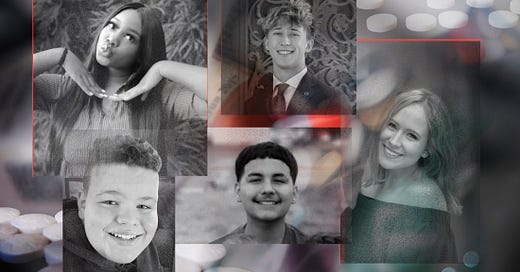


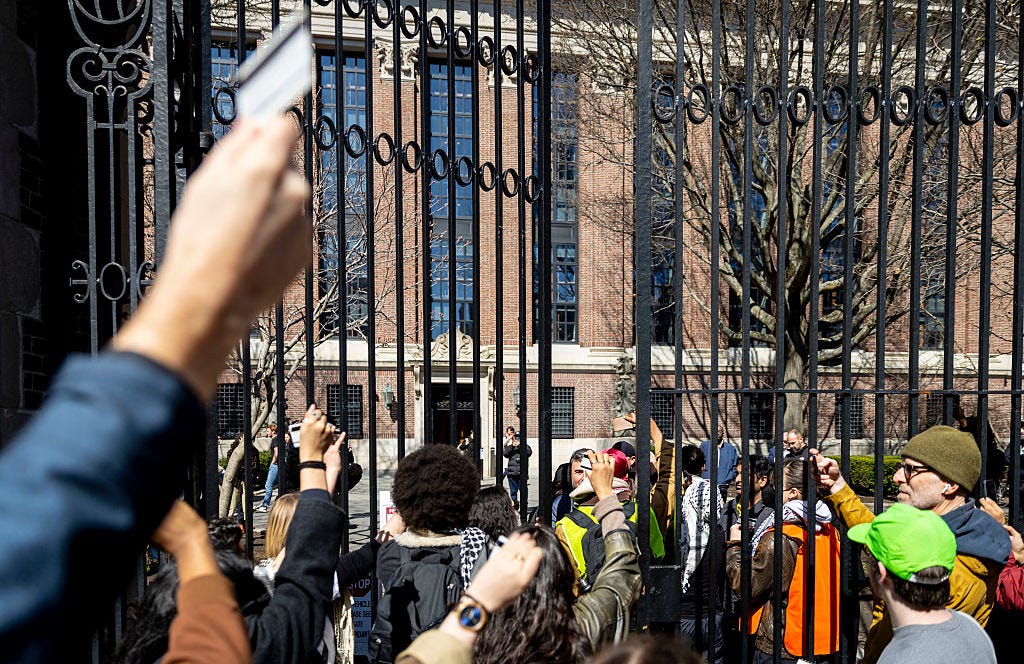



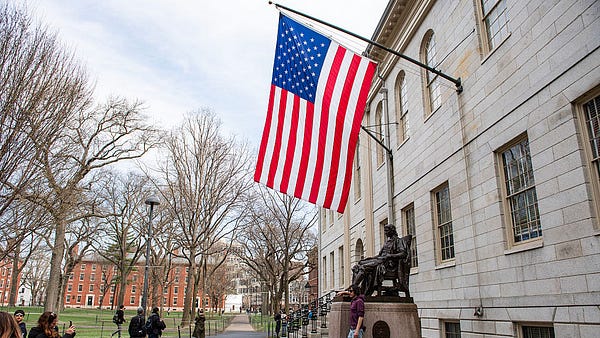





Every dealer caught should be charged with murder.
The only way to stop this mass killing of our youth is to inspect each and every parcel that comes into the United States. Treat the cartels for what they are - terrorist organizations. Seal our porous borders. There is nothing to gain by decriminalizing drug sales, as noted by the abject failure in Oregon of this idiocy. We're being led down too damned many garden paths. For most, the good old days were the good old days.
Had a friend's son die of an accidental fentanyl overdose the night prior to going into rehab, which I'm told is common. His dealer was responsible for multiple deaths. But hey, gotta make a buck somehow,